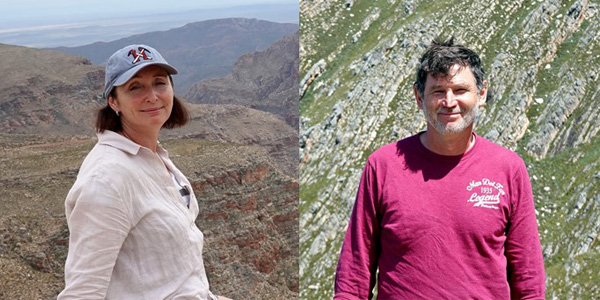Geologists explain why most basaltic magma chambers are roofless
- Wits Communications
Wits geologists come up with an original interpretation for a long-standing petrological paradox – the common absence of roof rocks in basaltic magma chambers.
Dr Sofya Chistyakova and Professor Rais Latypov from the School of Geosciences of the Wits University in South Africa have come up with an original interpretation for a long-standing petrological paradox – the common absence of roof rocks in basaltic magma chambers. This research was published as a paper in Geology. Link

Chistyakova says: “A remarkable feature of most layered intrusions is a complete lack of any rocks that would have crystallized from the roof downwards. This is puzzling because magma cooling and, therefore, crystallization is expected to take place mostly at the roof of these intrusions. The absence of roof rocks is thus suggestive of some fundamental process that results in no preservation of roof rocks in basaltic magma chambers”.
“The most likely answer to this paradox we have got from our field mapping of the Sudbury Igneous Complex, Canada in which the roof sequence of rocks is notably absent. While mapping, we have discovered a few huge blocks (up to 700 m in size) sitting in the floor sequence of rocks. It turned out that these blocks are fragments of the original roof sequence which was destroyed and collapsed as angular blocks on the chamber floor”, says Latypov.
“More recently we have found a large pothole-like depression (300 m in depth and 550 m in width) in the chamber floor of the Sudbury Igneous Complex. Our preferred interpretation to this depression is that the fallen roof-derived blocks have resulted in local irregularities in topography of the chamber floor so that crystal deposition onto and between the neighbouring blocks produced such pothole-like depressions”, says Chistyakova.
Wits researchers argue that the phenomenon of physical disruption of roof sequences provides a reasonable answer to the common lack of the rocks that grew from the roof downwards in basaltic magma chambers. “We predict that future research will reveal many more examples of mafic-ultramafic layered intrusions with roof-derived blocks hosted by the floor rock sequences”, says Latypov.

